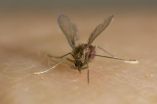(Press-News.org) CHICAGO --- Controlling pain during childbirth and post delivery may reduce the risk of postpartum depression, writes Katherine Wisner, M.D., a Northwestern Medicine® perinatal psychiatrist, in a July 23 editorial in Anesthesia & Analgesia.
Wisner's editorial is based on a new Chinese study that found women who had pain control with epidural anesthesia during a vaginal delivery had a much lower risk for postpartum depression than women who didn't have the epidural.
"Maximizing pain control in labor and delivery with your obstetrician and anesthesia team might help reduce the risk of postpartum depression," Wisner said.
The study findings are among the few to examine the relationship between pain during labor and postpartum depression.
"It's a huge omission that there has been almost nothing in postpartum depression research about pain during labor and delivery and postpartum depression," Wisner said. "There is a well-known relationship between acute and chronic pain and depression."
Wisner is director of Northwestern's Asher Center for the Study and Treatment of Depressive Disorders. She also is a professor of psychiatry and behavioral sciences and obstetrics and gynecology at Northwestern University Feinberg School of Medicine and a psychiatrist at Northwestern Memorial Hospital.
The Chinese study found that women who had an epidural for pain relief during labor for a vaginal delivery had a 14 percent rate of depression at six weeks postpartum compared to nearly 35 percent rate of depression for those who did not have the pain relief. An epidural was the only means of pain control available to the women.
The study also found that breastfeeding was more common in the group who had an epidural for pain compared to those who did not (70 percent versus 50 percent.)
"These findings are quite exciting and further research should be done to confirm them, especially in women at increased risk of postpartum depression and in women from other cultures," Wisner said.
The incidence of severe acute postpartum pain is approximately 11 percent, Wisner reports in the article. The incidence of chronic pain varies by study but ranges from 1 to 10 percent for vaginal delivery and 6 to 18 percent after a cesarean.
Biological and emotional factors contribute to postpartum depression, which affects 14.5 percent of women who give birth. A woman who has chronic pain one to two months after delivery should be screened for depression, noted Wisner, also the Norman and Helen Asher Professor at Feinberg.
Managing acute postpartum pain supports the new mother's ability to emotionally attach and care for her infant, Wisner points out.
"Pain control gets the mother off to a good beginning rather than starting off defeated and exhausted," Wisner said. "Whether it's vaginal or cesarean section delivery, pain control postpartum is an issue for all new mothers. There is no way to have a delivery without pain. The objective here is to avoid severe pain. Controlling that delivery pain so a woman can comfortably develop as a mother is something that makes a lot of sense."
INFORMATION:
Highlights
Pain control during childbirth and post delivery linked to reduced depression risk
Postpartum depression rates double for women without pain control
Significant numbers of women have acute and chronic pain related to childbirth
NORTHWESTERN NEWS: http://www.northwestern.edu/newscenter/
Controlling childbirth pain tied to lower depression risk
Severe pain during and post delivery linked to postpartum depression
2014-07-23
ELSE PRESS RELEASES FROM THIS DATE:
Life expectancy gains threatened as more older Americans suffer from multiple conditions
2014-07-23
With nearly four in five older Americans living with multiple chronic medical conditions, a new study by researchers at Johns Hopkins Bloomberg School of Public Health finds that the more ailments you have after retirement age, the shorter your life expectancy. The analysis, one of the first to examine the burden of multiple chronic conditions on life expectancy among the elderly, may help explain why increases in life expectancy among older Americans are slowing.
A report on the findings, based on an analysis of 1.4 million Medicare enrollees, appears in the August issue ...
Knowledgeable consumers more likely to buy when given fewer options
2014-07-23
The degree to which consumers perceive themselves to be knowledgeable about a product influences the likelihood that they will buy a particular product, researchers find in a series of studies published in Psychological Science, a journal of the Association for Psychological Science.
"Together, our findings suggest that subjective knowledge may play an important role in determining ideal size for choice sets," explains researcher Liat Hadar of the Arison School of Business at the Interdisciplinary Center Herzliya in Israel. "That is, more options should be provided in ...
Benefits of combo lipid emulsion no greater than soy-based emulsion for pediatric patients
2014-07-23
Lipid emulsions are crucial for providing essential fatty acids and energy to infants and children who need intravenous feeding. There has been concern that soybean-based emulsions could compromise immune functions and promote liver damage due to its composition. Combination lipid emulsions based on triglyceride oil, fish oil, or olive oil have been developed to address this concern.
However, researchers at Rutgers and Tufts universities found that concern may be unwarranted, according to a review published today in the OnlineFirst version of the Journal of Parenteral ...
Largest genetic survey to date shows major success of giant panda breeding programs
2014-07-23
Heroic worldwide conservation efforts have made great strides in saving China's endangered national treasure, the giant panda. Now, in China, there are over 65 giant panda reserves that have been established and three large breeding centers. But despite these efforts, just 1596 pandas remain in the wild.
Breeding programs in conservation centers and zoos hope to save the panda by improving genetic diversity, avoid inbreeding and ultimately, introduce pandas back to the wild. Just how are these high-profile programs doing so far?
In a new study appearing in the advanced ...
The human parasite Leishmania is a probiotic for the fly that carries it
2014-07-23
The Leishmania parasite, which causes the human disease leishmaniasis, acts as a probiotic in the insect that transmits it to humans, protecting them from bacterial disease. Findings published in the open access journal Parasites and Vectors suggest that using bacterial controls to stop the spread of leishmaniasis could sometimes have the opposite effect to that intended, by benefiting flies carrying the parasite.
Around 12 million people are currently infected with leishmaniasis worldwide, mostly in South America, Africa and Asia. It is estimated to kill 20-50,000 people ...
Stress can make hard-working mongooses less likely to help in the future
2014-07-23
Researchers studying banded mongooses in Uganda have discovered that those who work hard to care for pups may be less likely to invest in future offspring in the same way due to elevated stress hormones.
Dr Jennifer Sanderson, from the University of Exeter, has been observing wild banded mongooses to understand why working hard makes them less likely to work hard in the future.
She discovered that when a banded mongoose invests heavily to care for mongoose pups, it experiences an increase in circulating stress hormones (or 'glucocorticoids'), and these high stress ...
New model helps explain how provisions promote or reduce wildlife disease
2014-07-23
Athens, Ga. – Scientists have long known that providing supplemental food for wildlife, or resource provisioning, can sometimes cause more harm than good. University of Georgia ecologists have developed a new mathematical model to tease apart the processes that help explain why. Their research, which has implications for public health and wildlife conservation, appears in the Royal Society journal Biology Letters.
Wildlife of many kinds are increasingly finding their meals in human environments, gathering at places like backyard bird feeders, landfills or farms that offer ...
In asthma, it's not just what you smell, but what you think you smell
2014-07-22
PHILADELPHIA (July 22, 2014) – New research from the Monell Center reveals that simply believing that an odor is potentially harmful can increase airway inflammation in asthmatics for at least 24 hours following exposure. The findings highlight the role that expectations can play in health-related outcomes.
"Asthmatics often are anxious about scents and fragrances. When we expect that an odor is harmful, our bodies react as if that odor is indeed harmful," said study lead author Cristina Jaén, PhD, a Monell physiologist. "Both patients and care providers need to understand ...
The dopamine transporter
2014-07-22
Recent published research in the Journal of Clinical Investigation demonstrates how changes in dopamine signaling and dopamine transporter function are linked to neurological and psychiatric diseases, including early-onset Parkinsonism and attention deficit hyperactivity disorder (ADHD).
"The present findings should provide a critical basis for further exploration of how dopamine dysfunction and altered dopamine transporter function contribute to brain disorders" said Michelle Sahai, a postdoctoral associate at the Weill Cornell Medical College of Cornell University, ...
Alaska frogs reach record lows in extreme temperature survival
2014-07-22
Freezing and thawing might not be good for the average steak, but it seems to help wood frogs each fall as they prepare to survive Alaska's winter cold.
"Alaska wood frogs spend more time freezing and thawing outside than a steak does in your freezer and the frog comes back to life in the spring in better shape than the steak," said Don Larson, University of Alaska Fairbanks graduate student and lead author on a recent paper demonstrating that freeze tolerance in Alaska wood frogs is more extreme than previously thought.
Although wood frogs are well-studied freeze-tolerant ...
LAST 30 PRESS RELEASES:
Report on academic exchange (colloquium) with Mapua University
Sport in middle childhood can breed respect for authority in adolescence
From novel therapies to first-in-human trials, City of Hope advances blood cancer care at the American Society of Hematology (ASH) annual conference
Research aims to strengthen the security of in-person voting machines
New study exposes hidden Alzheimer’s 'hot spots' in rural Maryland and what they reveal about America’s growing healthcare divide
ASH 2025: Study connects Agent Orange exposure to earlier and more severe cases of myelodysplastic syndrome
ASH 2025: New data highlights promise of pivekimab sunirine in two aggressive blood cancers
IADR elects George Belibasakis as vice-president
Expanding the search for quantum-ready 2D materials
White paper on leadership opportunities for AI to increase employee value released by University of Phoenix College of Doctoral Studies
ASH 2025: New combination approach aims to make CAR T more durable in lymphoma
‘Ready-made’ T-cell gene therapy tackles ‘incurable’ T-cell leukemia
How brain activity changes throughout the day
Australian scientists reveal new genetic risk for severe macular degeneration
GLP-1 receptor agonists likely have little or no effect on obesity-related cancer risk
Precision immunotherapy to improve sepsis outcomes
Insilico Medicine unveils winter edition of Pharma.AI, accelerating the path to pharmaceutical superintelligence
Study finds most people trust doctors more than AI but see its potential for cancer diagnosis
School reopening during COVID-19 pandemic associated with improvement in children’s mental health
Research alert: Old molecules show promise for fighting resistant strains of COVID-19 virus
Journal of Nuclear Medicine Technology supplement highlights advances in theranostics and opportunities for growth
New paper rocks earthquake science with a clever computational trick
ASH 2025: Milder chemo works for rare, aggressive lymphoma
Olfaction written in bones: New insights into the evolution of the sense of smell in mammals
Engineering simulations rewrite the timeline of the evolution of hearing in mammals
New research links health impacts related to 'forever chemicals' to billions in economic losses
Unified EEG imaging improves mapping for epilepsy surgery
$80 million in donations propels UCI MIND toward world-class center focused on dementia
Illinois research uncovers harvest and nutrient strategies to boost bioenergy profits
How did Bronze Age plague spread? A sheep might solve the mystery
[Press-News.org] Controlling childbirth pain tied to lower depression riskSevere pain during and post delivery linked to postpartum depression



